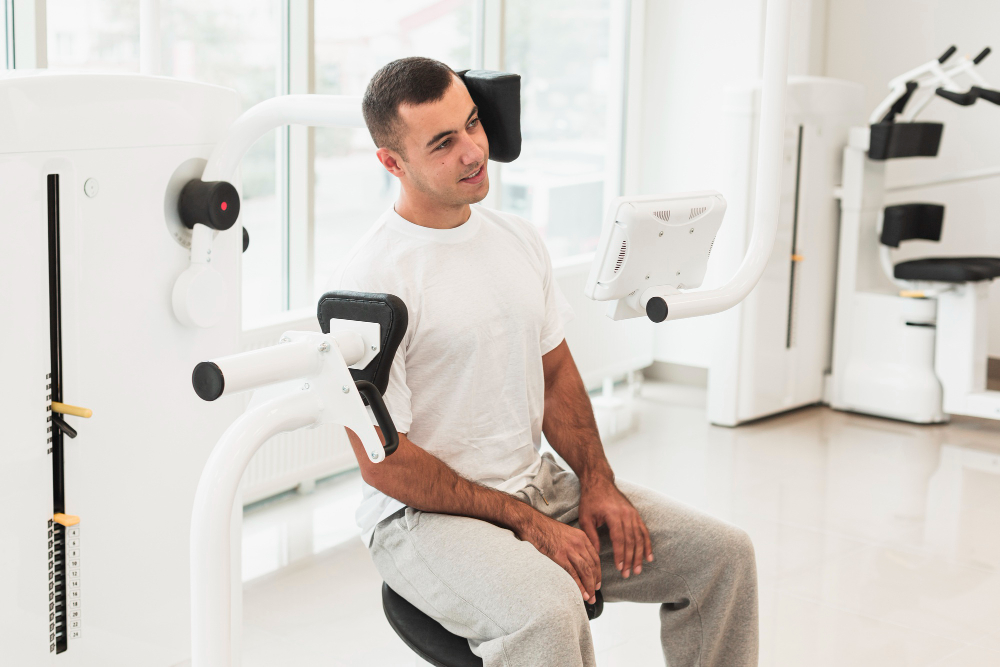
Last updated on by MRC
Pain isn’t just a physical sensation—it’s an experience that affects every part of life. From limiting mobility to disrupting sleep, chronic pain can make even the simplest daily tasks seem impossible. Traditional treatments like painkillers and physiotherapy often provide temporary relief, but they don’t always address the root cause. This is where interventional pain management comes into play. Instead of masking pain, it targets its source using minimally invasive procedures, rehabilitation techniques, and multidisciplinary approaches.
If you’re tired of living with pain that never truly goes away, it’s time to look at a solution that goes beyond surface-level relief. Let’s break down how chronic pain treatment works through interventional rehab, its benefits, and the role of specialized centers in helping individuals regain their independence.
Interventional pain management isn’t just another treatment approach; it’s a game-changer in chronic pain rehabilitation. Unlike conventional methods that rely on medication or surgery, this technique focuses on procedures that directly interfere with pain pathways. Some key components include:
Interventional techniques don’t just treat symptoms; they address the source of pain. This makes them far more effective for long-term relief compared to painkillers that often lead to dependency.
Still skeptical? Let’s break down the real advantages of this method compared to conventional treatments.
Interventional pain rehab isn’t just about short-term relief—it’s a long-term investment in regaining control over your life.
Chronic pain affects mental, emotional, and social well-being. People suffering from long-term pain often experience frustration, helplessness, and even depression due to limited mobility and reduced quality of life. Standard treatments like painkillers or physiotherapy may provide temporary relief, but they rarely offer a comprehensive, long-term solution. This is where interventional pain management combined with chronic pain rehab comes into play, offering a holistic, structured approach to pain relief.
Here’s how interventional pain rehab creates a lasting transformation in chronic pain management:
Unlike conventional treatments that focus on isolated symptoms, chronic pain rehabilitation takes a multi-faceted approach by combining different disciplines to treat pain at its core. This means integrating:
By addressing medical, physical, emotional, and lifestyle factors together, pain rehab delivers more effective and long-term relief than standalone treatments.
One of the biggest problems with traditional pain treatments is the one-size-fits-all approach. What works for one patient might not work for another. Interventional pain management ensures that each treatment plan is personalized based on:
A customized rehab plan allows for better pain control, improved recovery, and a more sustainable outcome rather than relying on general pain relief methods.
Many people dealing with chronic pain become dependent on doctors, medications, or constant therapy sessions. The goal of pain rehab isn’t just to relieve pain—it’s to empower individuals to manage their pain effectively without constant medical intervention.
Through structured rehab programs, patients learn:
Over time, patients experience greater autonomy, allowing them to return to daily activities with confidence and ease.
Living with chronic pain is mentally exhausting. It affects work productivity, relationships, and overall happiness. Many patients develop:
Check This Out: Chronic Pain and Depression: How They are Linked and How to Treat Both
When it comes to effective chronic pain treatment, choosing the right facility is just as important as the treatment itself. A pain management hospital in Kolkata should offer:
At MRC, a reliable pain management hospital in Kolkata, we go beyond treating symptoms—we help patients rebuild their lives. Through a range of therapeutic interventions, we address the medical, physical, emotional, and functional aspects of pain, allowing individuals to regain independence. Being the best pain clinic in Kolkata, our approach ensures long-term relief through comprehensive chronic pain rehabilitation, whether it’s spinal issues, arthritis, or nerve-related conditions.
Interventional pain rehab is powerful, but self-care plays a major role in chronic pain treatment too. Here are a few things you can do:
Combining these habits with interventional pain management can create a sustainable, long-term pain relief strategy.
Interventional pain rehab isn’t just about reducing pain—it’s about transforming how people live with pain. By offering a multi-dimensional, structured, and personalized approach, it ensures long-term recovery, improved mobility, and enhanced quality of life. Rather than just treating symptoms, this approach helps individuals reclaim their independence and regain control over their bodies and minds.
It provides minimally invasive, image-guided treatments like nerve blocks and radiofrequency ablation to target pain at its source, ensuring effective relief with faster recovery.
The four pillars of chronic pain management are:
Pain management focuses on relieving pain through medications, physical therapy, and lifestyle modifications. Interventional pain management, on the other hand, uses minimally invasive procedures like nerve blocks, epidural injections, and spinal cord stimulation to target the source of pain directly. It is often recommended for chronic pain that doesn’t respond to conventional treatments.









